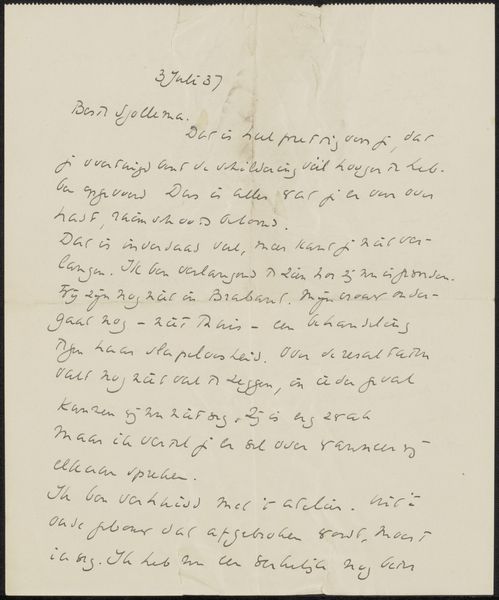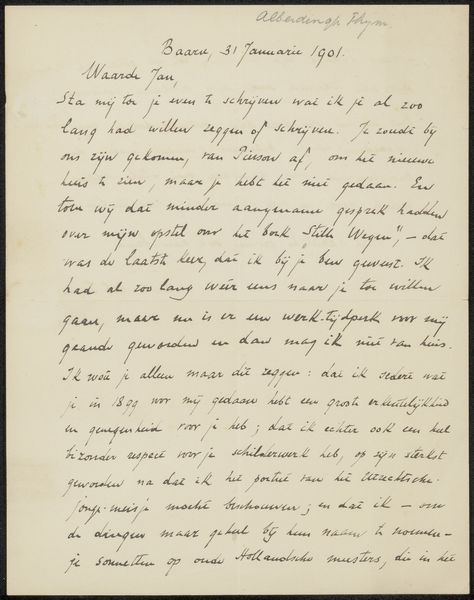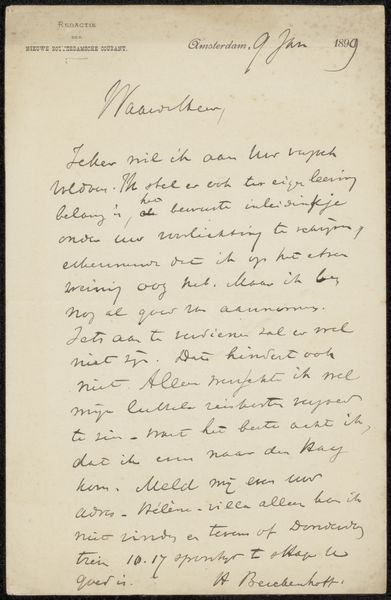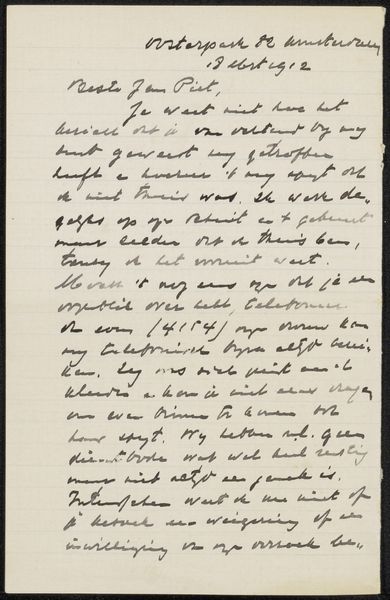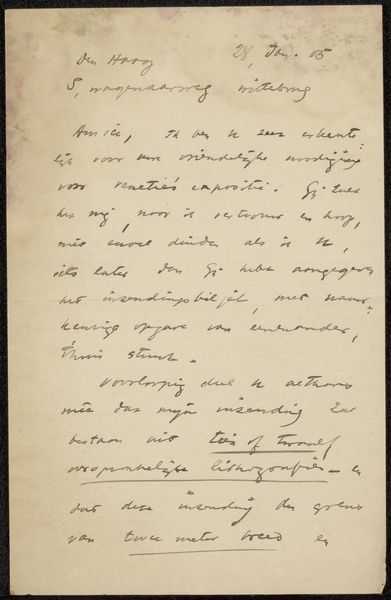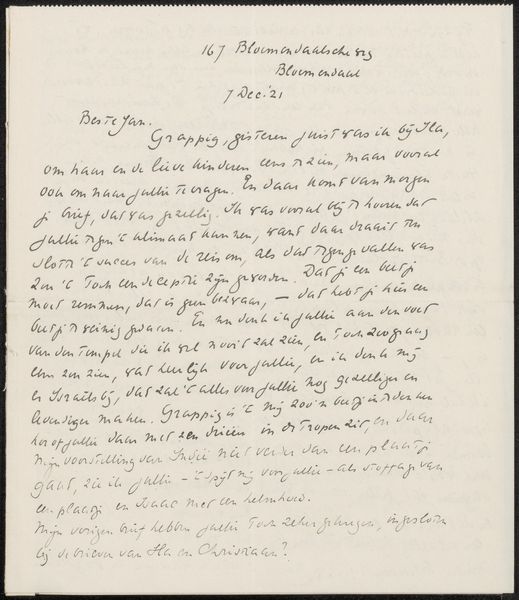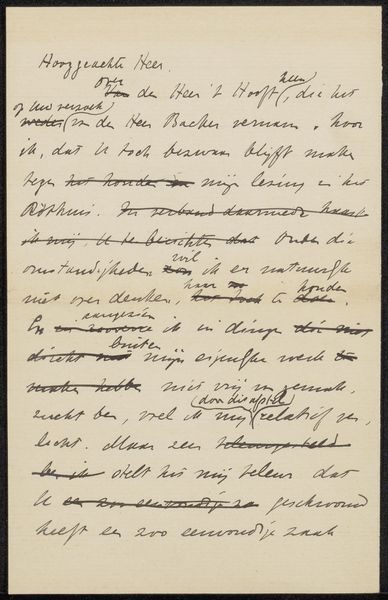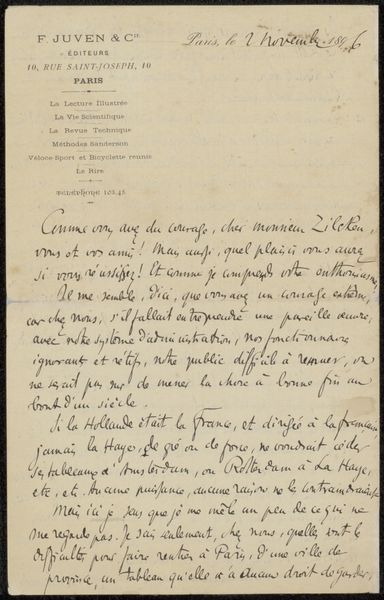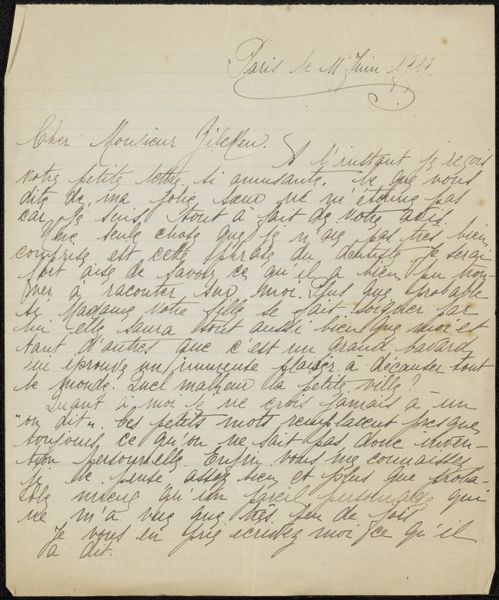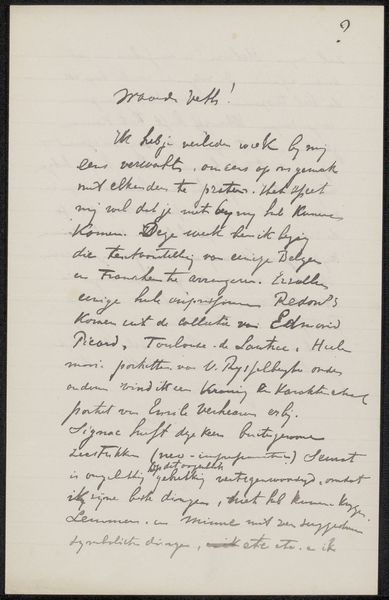
drawing, paper, ink, pen
#
portrait
#
drawing
#
pen sketch
#
old engraving style
#
hand drawn type
#
paper
#
personal sketchbook
#
ink
#
ink drawing experimentation
#
pen-ink sketch
#
ink colored
#
pen work
#
sketchbook drawing
#
pen
#
sketchbook art
#
calligraphy
Copyright: Rijks Museum: Open Domain
Editor: Here we have "Brief aan Philip Zilcken," possibly from 1893, by Richard Nicolaüs Roland Holst. It seems to be a letter, composed with ink on paper. The handwriting, the way the ink sits on the page, almost feels like another form of drawing itself. What stands out to you? Curator: The materiality of this letter is key. The type of paper, the specific ink used—these weren’t neutral choices. Consider the production of ink at the time. Was it mass-produced, pointing to a certain democratization of writing materials, or something more specialized, aligning Holst with particular artistic circles? The labor of handwriting itself also challenges notions of artistic skill, asking: is the message the art, or is the deliberate crafting of each word? Editor: That’s fascinating! So, the value isn’t just in the content but also in the physical act of writing and the materials employed. Does the intended recipient, Zilcken, influence how we perceive this object? Curator: Absolutely. Zilcken was also involved in the arts. The act of correspondence suggests a network of artistic exchange. What did letter-writing represent socially and culturally? How does this physical letter disrupt the clean lines of "high art" by referencing both intellectual thought and craft? Editor: So, analyzing the letter through its materials and production reveals insights beyond just the text itself, it tells about social dynamics. Curator: Precisely. And looking at the materiality invites us to consider the role of labor, consumption, and artistic production. This letter shifts between personal communication and deliberate artistic statement, blurring traditional hierarchies. Editor: I hadn't thought about it that way before. Thanks for making me reconsider it! Curator: The pleasure is all mine. Looking closely at materials always opens up unexpected avenues of inquiry.
Comments
No comments
Be the first to comment and join the conversation on the ultimate creative platform.
